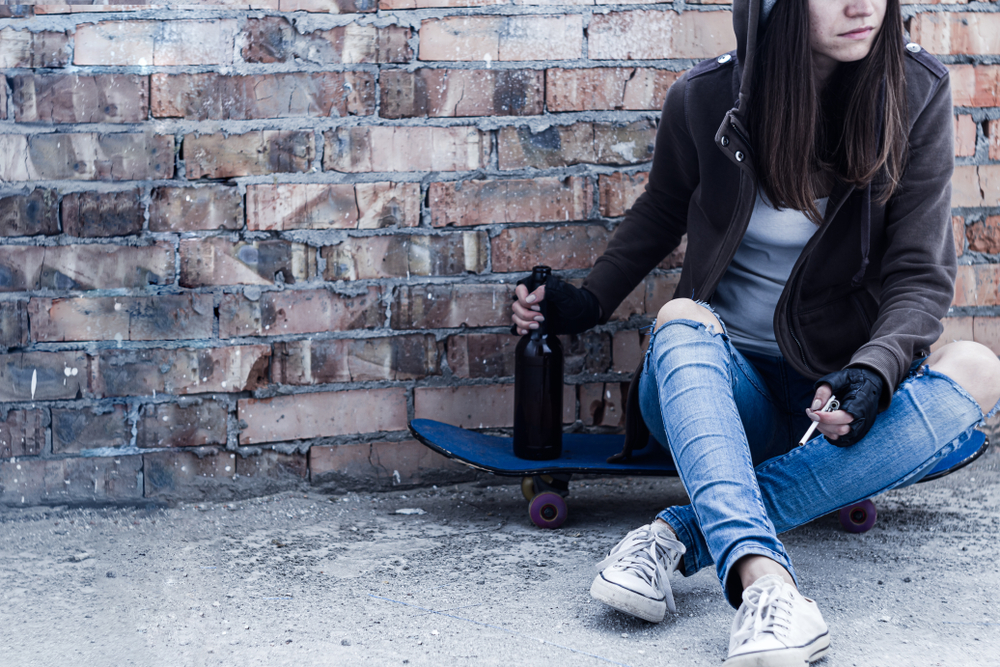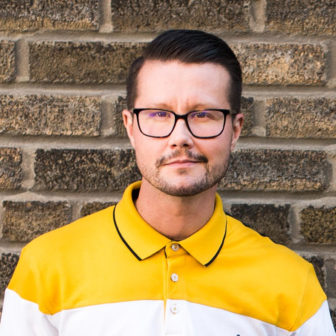
Monstar Studio/Shutterstock
.
“Gay kids in a shelter that is predominantly straight are very vulnerable, they’re in a very hard position and it makes it almost impossible for them to get on their own two feet. It’s just as simple as that. They’re in a position where they can be harassed and discriminated against so easily at every turn and that’s especially true for trans people. There are just so many issues that arise when a shelter isn’t properly prepared to house trans people.” —Adam, 25
There are a variety of factors that may lead a young person to becoming homeless, including poverty, racism, unstable employment and exiting child welfare and the juvenile justice system. However, identity-based family rejection resulting from a young person coming out as LGBTQ2S (2S is two-spirit) is a major contributing factor to youth homelessness and the most frequently cited reason that queer and transgender youth experience homelessness. It has been estimated that 25-40% of young people experiencing homelessness in North America identify as LGBTQ2S.
 Hidden homelessness remains a significant issue among LGBTQ2S youth, especially for those living in rural and remote communities, making it difficult for them to be included in statistics and key reports on youth homelessness. Therefore, these numbers may be higher or lower in some communities across Canada and the U.S. We still do not know because we haven’t been collecting the data up until fairly recently.
Hidden homelessness remains a significant issue among LGBTQ2S youth, especially for those living in rural and remote communities, making it difficult for them to be included in statistics and key reports on youth homelessness. Therefore, these numbers may be higher or lower in some communities across Canada and the U.S. We still do not know because we haven’t been collecting the data up until fairly recently.
Even when we do collect inclusive data, many youth are missed because they do not access services due to safety concerns. Widespread homophobia, transphobia and biphobia continue to be an everyday reality for many, resulting in situations where queer and transgender youth do not feel safe accessing the services that are supposed to provide support to all young people.
Some LGBTQ2S youth experience homelessness, poverty, discrimination and violence at higher rates than others. For example, indigenous queer and transgender youth and transgender youth of color, especially young transgender women of color, face the highest rates of homelessness, discrimination and violence and are more likely to experience violent crime and sexual assault. One of the biggest issues that LGBTQ2S youth face in shelters, housing programs and institutions more broadly are issues regarding safety. Queer and transgender youth are often unsafe.
“I’m more comfortable telling people about my heroin addiction than I am telling people I’m gay because you don’t get the same reactions […] One of my close friends actually tried to cut my throat when I told him I was gay. I’ve been in a few shady situations in my life where I’ve been stabbed, I’ve been shot, I’ve been lit on fire. I’ve experienced people lashing out badly to the point where I’m very careful with who I tell. As much as I’d love to be one of those people who don’t care what anybody else thinks, people will beat the shit out of you. Just because it hasn’t happened to you yet, doesn’t mean that people don’t get murdered over this stuff. —Purple, 25
I can’t tell you how many young people have told me that they do not feel safe and are regularly forced to choose between unsafe situations, such as having to decide between sleeping somewhere that they know is not going to be safe, but where they could identify however they want, and some place they might be safer physically, but will likely be discriminated against based on their identity. And others who have made the difficult decision to sleep in a park or an alleyway, where they knew they would need to be alert all night, rather than in a shelter where they would have access to a bed, a warm shower and hot meal, but where their gender identity would not be respected. In both these instances, the mental health implications are severe and can have a lasting negative impact.
Discrimination and social stigma have serious consequences for the health and wellbeing of LGBTQ2S youth, leading to significant mental health issues, substance use, anxiety, depression and suicide, especially for transgender youth. The stressful and difficult circumstances of street life create significant challenges to youths’ mental, emotional, and physical health, particularly for LGBTQ2S youth, who are often trying to find a safe place to sleep. LGBTQ2S youth experiencing homelessness face increased risk of physical and sexual exploitation, identity-based violence and criminal victimization.
Over the years, I have learned that even the most resistant people can change, including people with the authority to implement real world change, as well as organizations that have historically been homophobic and transphobic. People’s attitudes and thinking can shift, but sometimes they need the right tools to better understand certain complex issues.
There are different things that each of us can do and different ways that services can respond to these issues. First and foremost, people need to be treated with respect as their self-identified gender. A recent study reported better mental health, including lower risk of depression and suicide, among transgender people addressed by their chosen name at work, school and home.
Specialized LGBTQ2S housing programs are also a critical part of the solution, but we can’t rely on population-based programs to meet the needs of all LGBTQ2S individuals. That’s why every youth-serving organization and housing program needs to do the work to become LGBTQ2S-inclusive and safe. We need to stop creating and re-creating programs and policies that do not include or work for everyone.
How are we supposed to know who is accessing our programs and who is experiencing homelessness if research, data collection tools and key forms do not include LGBTQ2S identities? If we don’t ask inclusive questions, we don’t collect accurate data.
By making a commitment to prioritize LGBTQ2S youth, we can create inclusive environments where youth can bring their full authentic selves and learn to celebrate who they are.
Every person deserves this.
Alex Abramovich is a scientist at the Institute for Mental Health Policy Research, Centre for Addiction and Mental Health and an assistant professor at the Dalla Lana School of Public Health, University of Toronto. He has been addressing the issue of LGBTQ2S youth homelessness for nearly 15 years.





























